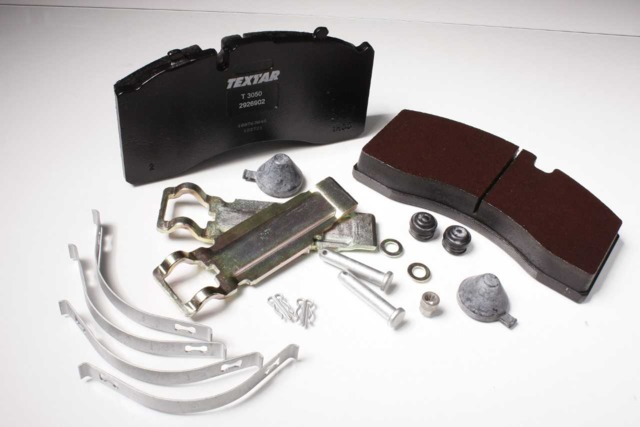Maintenance considerations for air disc brakes
With the increased adoption of air disc brakes, it is still crucial to implement a thorough PM program. Air disc brakes (ADB) continue to grow in popularity, and there are a number of reasons for this. Improved safety, shorter stopping distances, consistent stopping power and more efficient maintenance practices all help to lower both the cost per mile as well as vehicle downtime. As an example, the estimated time for a wheel-end drum brake shoe change and general maintenance hovers around the one-hour mark, while an air disc brake pad change out takes approximately 15 minutes.
Air disc brakes (ADB) continue to grow in popularity, and there are a number of reasons for this. Improved safety, shorter stopping distances, consistent stopping power and more efficient maintenance practices all help to lower both the cost per mile as well as vehicle downtime. As an example, the estimated time for a wheel-end drum brake shoe change and general maintenance hovers around the one-hour mark, while an air disc brake pad change out takes approximately 15 minutes.
Brake performance is also a big advantage of the ADB system. This brake system can withstand the higher temperatures that often occur in a severe duty or transit application much more efficiently than a drum brake system. A vehicle will be less susceptible to fade because of this attribute. Rather than the drum moving away from the friction material as temperatures increase, the rotor will expand and move into the brake friction material to continue efficient braking.
Proper Maintenance is Key
Fleets likely to see maintenance savings with air disc brakes are the fleets in the medium to heavy duty application range, ranging from regional line-haul vehicles to refuse and transit bus applications. Even though air disc brakes are easily maintained, they still require a thorough inspection from time to time.
First, make sure technicians are well trained in the service of the caliper. Brake manufacturers conduct great training classes and have maintenance manuals for their products.
A common issue that occurs in the field is the breaking of the shear adapter, which is used to extend and retract the tappets. When attempting to make a brake adjustment, be sure to first ensure the vehicle is properly lifted and the wheels are chocked. Also, make sure the parking brake has been released, allowing technicians to make tappet adjustments. If the shear adapter is torqued after the tappets have fully retracted, this will cause the shear adapter to fail. This component is manufactured to do this to prevent damage to the caliper. If the shear adapter continues to fail, this indicates that the internal adjuster is not functioning properly and that caliper will need to be replaced.
For over-the-highway vehicles, the condition of brake pads should be inspected approximately every four months. More extreme duty cycles should be inspected more often initially so that the estimated time between pad changes can be established.
Some caliper manufacturers use wear indicators, which are marked on the side of the caliper, to estimate when the pads are ready to be changed. Another indicator that it may be time to change brake pads is if the tappet boots are clearly visible.
Importance of preventative maintenance
Just like drum brakes, preventive maintenance is critical with air disc brakes. A service interval should be established for checking the running clearance between the brake pads and the rotor. Ensuring that a fleet is not wearing their pads to a less-than-minimal thickness is critical to maintenance costs. If pads are worn too thin and there is metal-to-metal contact between the rotor and the pad backing plate, this may cause extreme temperatures, noise, vibration and very likely destruction of the internals of the caliper assembly. This can be very expensive to repair.
If the friction material of the pads is worn down to 2mm, they should be replaced. If the pads measure more than 2mm, but there are pad surface irregularities such as significant taper end-to-end or top-to-bottom, material missing, excessive cracking, etc., they must also be replaced. Also consider if the pad may wear beyond the 2mm before the next scheduled inspection. Brake pads should always be replaced on both ends of an axle at the same time.
Conclusion
Overall, ADBs can help shorten vehicle downtime because they are easier to maintain compared to drum brakes. It is still important, however, to establish preventative maintenance schedules on this area of the vehicle to ensure optimal life of the braking system.
Article Courtesy of Vehicle Service Pros
